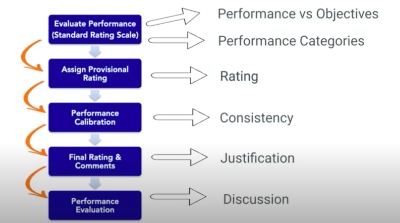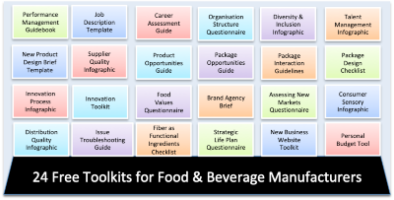How to Evaluate Employee Performance
Performance appraisals are an essential annual process designed to evaluate, align, and document an employee’s performance. This assessment goes beyond simply measuring results; it also considers the employee’s contributions and behaviors. The way results are achieved—through actions, attitudes, and collaboration—is just as important as the results themselves.
My training video and free Performance Management Guidebook step you through this process. Read on below video
Implementing an effective process for evaluating, managing and enhancing performance offers numerous benefits
- Boost motivation and Engagement: Encourages employees and teams to stay engaged and motivated by providing clear direction and feedback.
- Maximises Performance: Allows you to optimise individual and team contributions.
- Recognises Achievements: Provides a mechanism to recognise successes and constructively addresses areas for improvement and poor performance
- Fosters Growth: Supports personal development and team development.
- Enhances Retention: Builds a culture of recognition and growth, helping to retain talent.

Performance Evaluation Flowchart
This flowchart outlines the steps involved in the Performance Evaluation Process.
After setting objectives for the year, the next step is to evaluate employee performance against these established goals.
For guidance on setting employee objectives, refer to the separate training video dedicated to this topic Setting Employee Objectives
Rating Scale
Based on this assessment a provisional rating is assigned by the team leader/manager.
To ensure fairness and consistency across the organisation, employees are evaluated using a standardised rating scale with clearly defined performance categories.
Each point on the scale is accompanied by detailed descriptions to help managers apply the scale accurately and objectively.
The structure of the scale—such as the number of points and specific terminology—varies in organisations. It’s important to familiarise yourself with the system and definitions used within your company.
Performance Calibration
A performance calibration exercise ensures consistent and fair application of the rating scale across the organisation. Usually led by HR, this process takes place before finalising and communicating performance ratings to employees. During the exercise, managers across the organisation align their assessments to maintain equity and consistency. Once completed, a final performance rating is assigned for each employee, accompanied by detailed justification comments.
Performance Evaluation Template
A standardised performance management template is used to set objectives and evaluate results e.g. Objectives are outlined on the left, while performance outcomes for each objective are recorded on the right. An example of this template can be found in my Performance Management Guidebook
The manager and employee need to prepare thoroughly for the performance evaluation meeting to ensure a productive and insightful discussion.
Employee Preparation
Employees begin by self-assessing their performance for each objective and updating the Performance Management Template with detailed information, including:
- What was delivered: A clear summary of outcomes achieved.
- How it was delivered: Insights into the approach taken and the behaviours demonstrated.
- The business impact: Specific measures and data to highlight the results’ significance.
- The employee can also include additional deliverables not covered in the original objectives.
Additionally, employees can include any noteworthy deliverables not initially outlined in their objectives.
This process helps employees gain deeper insight into their performance, fostering a better understanding of their contributions and areas for growth.
Manager Preparation for Performance Evaluation
Managers play a crucial role in ensuring a fair and balanced performance evaluation. Key preparation steps include:
- Review the employee’s self-assessment: Carefully assess the provided information and request additional details or clarification if necessary.
- Gather additional input: Seek feedback from colleagues or stakeholders to provide a well-rounded evaluation of the employee’s performance.
- Update the Performance Management Template: Incorporate insights from the self-assessment and additional feedback to complete the template.
- Assign a rating and write a summary: For annual evaluations, determine a performance rating and draft a summary paragraph that encapsulates the employee’s performance over the year. Ensure the written comments align with the assigned rating for consistency and clarity
The final step is to conduct the annual evaluation meeting
Annual Evaluation Meeting
The annual evaluation meeting is a critical step in the performance management process. During the meeting, the manager and employee discuss and align on the employee’s progress against their objectives. Key aspects of the meeting include:
- The manager and employee review progress against objectives. Where the manager does not agree with an employees self-assessment, evidence and examples are provided and the template is updated.
- The manager highlights good performance and how the employee’s work contributed to the annual business plan
- The manager provides feedback to the employee on performance opportunities. Giving feedback and Managing Poor Performance are very important skills for managers and an integral part of performance management. These are covered in separate training videos and in my Performance Management Guidebook.
- The manager explains the scale and the performance categories and what constitutes good performance
- The manager provides guidance and coaching and assigns training as needed
- The manager provides a summary assessment of the employee’s performance throughout the year
- The manager communicates the performance rating and summary comments, providing evidence to support the rating. The rating should not be a surprise to the employee if regular discussions were held throughout the year.
- The employee is given time to review the performance evaluation, summary comments and rating and to give their comments.
- The manager and employee sign the performance evaluation.
- The manager provides the employee with a copy of the performance evaluation for their records.
The number of formal performance evaluation meetings during a calendar year varies by organisation. A good people manager will regularly discuss performance with an employee, both formally and informally throughout the year. Interim evaluations are extremely beneficial and cover the following:
- Review progress against objectives,
- Provide feedback and coaching as needed.
- Review the employees overall workload.
- Discuss issues and challenges faced by the employee.
- Align on any changes to objectives and priorities for the remainder of the year.
- Record all relevant information on the performance management template
The above Training Video and my free Performance Management Guidebook will provide you with the information you need to evaluate employee performance.






